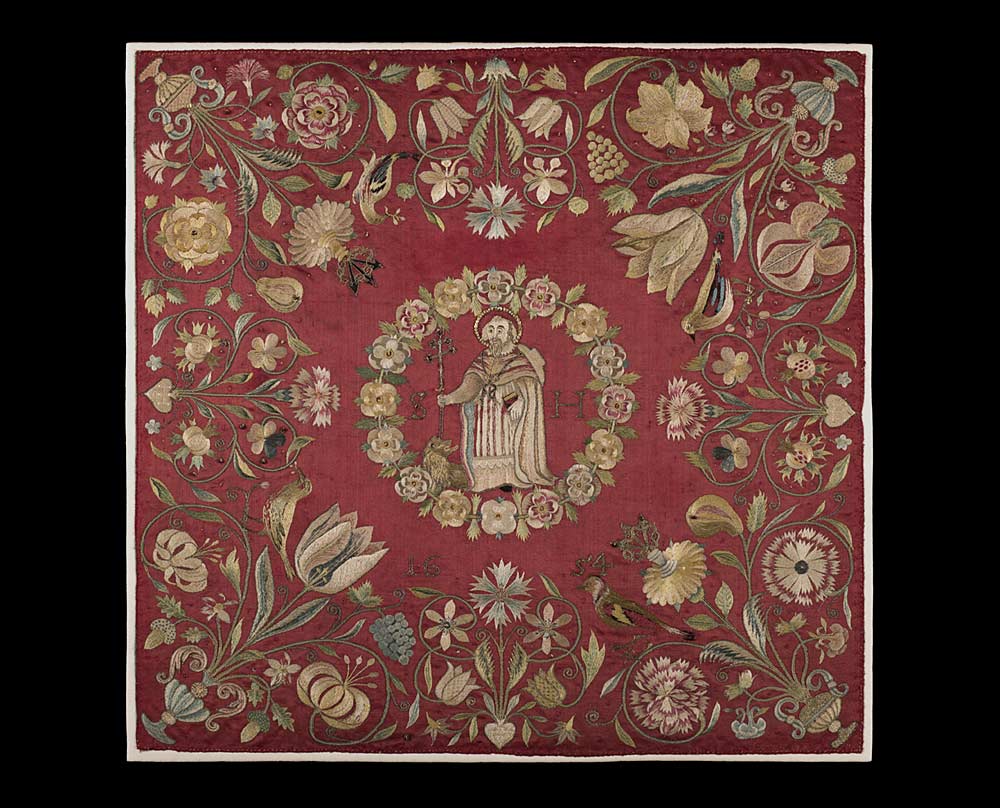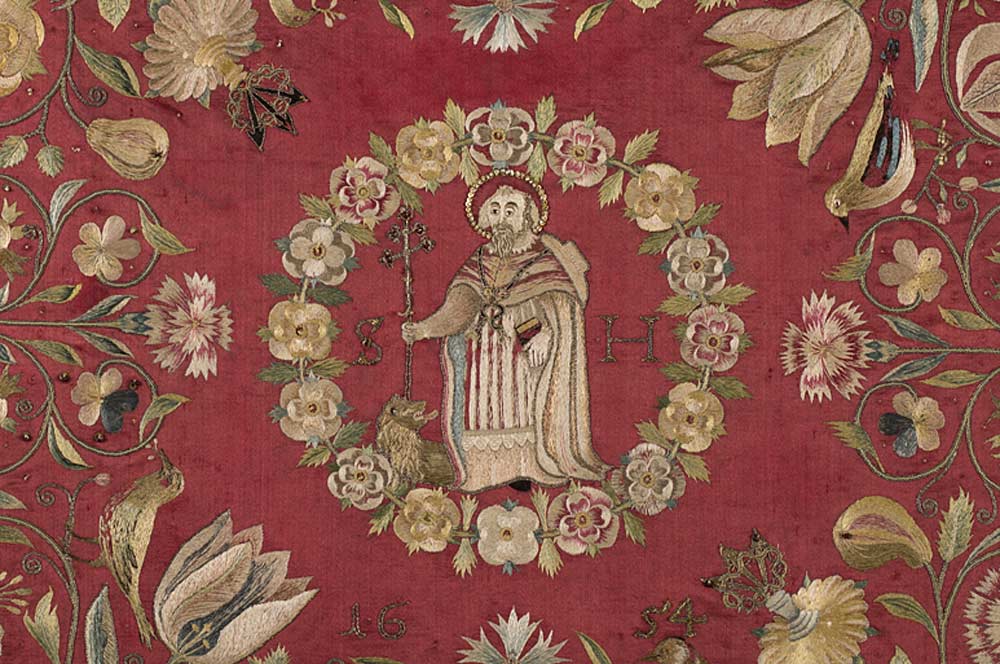Exhibition Index
2021 Online Exhibition
Chalice Veil
The practice of covering the chalice appeared in the 16th century. According to a requirement of the 1570 Missel romain, the chalice must be covered by a square or rectangular piece of silk when it is carried and during the initial part of Mass until the Offertory. The veil, often cut out of the same cloth as the chasuble, may be adorned with embroidery. The lining is also silk. A side measures between 60 and 70 cm. It is almost never used anymore.
Chalice Veil
France, 1654
53 x 54 cms
Red silk satin, polychrome silk embroidery and spun gold Inscriptions: S. H. and 1654
The veil comprises a richly embroidered floral composition which covers almost all of it but leaves a space in the centre for a wreath of flowers in the middle of which is embroidered, in long and short stitch, (passé empiétant) the figure of St. Jerome standing with the lion. A halo of pearls surrounds his head. The saint is wearing the traditional cardinal’s cope with the cardinal’s hat on his shoulders held up with a strap. It should be noted that his collar with lace trim, folded back onto the hood of the cope, is typically French. Beside the figure are the letters S.H.,
Sanctus Hieronimus, which identify him. The flowers surrounding him appear to be ranunculi.
Amongst the flowers in the composition it is possible to identify, coming out of two corner bunches, two passion flowers bearing, to be explicit, the three nails and the crown of thorns.
There are also tulips, roses, carnations, cornflowers and lilies which all have a symbolic meaning:
Roses for charity, carnations for faith and hope and tulip for love.
Bibliography:
Berthod Bernard, Favier Gaël, Dictionnaire des Arts liturgiques du Moyen-âge à nos jours, Châteauneuf sur Charente, 2015, p. 470-471. Dumortier J., Revue pratique de liturgie et de musique sacrée, Lille, T. 2, 1917, p. 290-293.Collectif. Symbolisme et Botanique. Le sens caché des fleurs dans la peinture au XVIIe siècle, Caen, Exhibition at the Musée des beauxarts 1987


